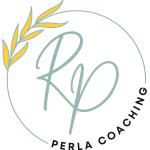While walking to clear my head one autumn afternoon, I heard the familiar sound overhead of geese honking. I looked up and saw the inverted V of flying geese. Pointed with determined grace, they flew toward the goal of a southern migrating location.
As they fly, geese change leadership or head bird positions. Researcher Ian Couzin confirms that, by rotating their position within the formation, each flock member expends a similar amount of energy. They do this to increase their flying efficiency. Teamwork strengthens the overall goal of the flock – to get to their migration point faster and secure a finer nesting place.

Geese show us that leadership is shared. Sometimes leaders lead, and sometimes they follow, given the information from their team and their end goal.
Observing how geese take turns leading the flock and supporting each other during long migrations can inspire lessons for human organizations.
Distributed leadership requires trust, keen communication, and cooperation to achieve common goals.
The geese’s goal is to get to their migration point together, and each goose gives a similar amount of energy output to survive the flight.
They also know instinctively that one’s health affects the health and goals of all.
If one goose cannot keep up with the flock, two other geese will break the formation and accompany the straggler down to the ground. They will remain with it to provide protection and support until it is well enough to take flight and rejoin the flock.
There is intelligence in the swarm.
As a leadership development coach, I support individuals to lead and work with their teams effectively.
Here are some good questions for leaders and team members to consider:
- What strategies can leaders use to nurture trust in their team relationships?
- How can leaders develop better communication with their teammates?
- How open are we to needed change when new information moves us to shift directions or slow down?
- What are some practical ways for leaders to recognize when someone on their team needs support or mentoring?
- When would a particular situation be better handled by someone on their team?
- How can you as a leader have your fingers more on the team’s pulse?
- The geese are so tuned into each other instinctually that they use this information to help guide the flock and maintain overall group efficiency.
Bottom line: This helps them survive and thrive, and they “know” this.
Leaders can learn from our feathered friends and see their teams as working organisms. They can learn to intuit when to hand off to someone else and follow their team members, given their knowledge and expertise.

